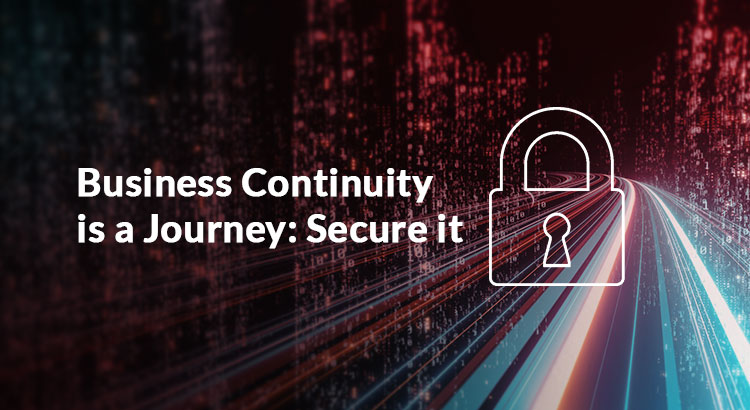Overview
While preparing for a long drive, we take necessary safety precautions like a stepney, spare tyre, extra fuel and other accessories to ensure a smooth journey. Just in case there is any mechanical hindrance, we can repair and resume our journey. Without any accessories, there could have been an unexpected halt.
Similarly, the business journey of any organization might face unexpected halt if there are inadequate IT security measures. In order to ensure smooth IT operations and business continuity, specific IT security policy and stringent IT security measures are required for business continuity. It ensures that even if there is any cyber threat or malicious activity, the organization has the ability to withstand it.
Facts
There are around 40,000 MNCs and 42.6 lakh registered SMEs in India as per statistics of 2020. Among them, 52% of organizations experienced cyber threats in the last one year. Among them, 57% of organizations suffered downtime with whopping financial losses in just one calendar year of 2020.
What are the threats?
There is a long list of cyber threats that organizations witnessed in the last few years. While many organizations successfully predicted and prevented cyber attacks, several others suffered unexpected monetary and reputational losses due to IT infrastructural loopholes. The most typical and predominant IT threats that loom large round the year consists of:
- Malicious Insiders’ Threat
- Privileged Access Misuse
- Data Theft
- Cyber Espionage
- Non-Compliance to global Regulatory Standards
How to ensure a Safe Business Journey?
Business growth and escalating revenue graph are the primary objectives of any MNC or SME across the globe. However, digital evolution has pushed organizational objectives to a topsy-turvy. To ensure business continuity and survive the cut-throat competition, most of the organizations from various industries need to have a dedicated IT security team with focus geared towards Information Security.
- Stringent IT Security Policy: The internal organizational policies of the IT department that are meant to ensure stringent cybersecurity practices and safeguard data assets from IT risks need to be robust enough. Every role of the employees should be specified and all IT activities should be rule-and role-based. A single loophole in the policy or deviation from the standard rules might wreak havoc.
- Dedicated & Trained IT Security Team: The robustness of IT security in an enterprise largely depends on the people of the organization. Starting from managing the data center, monitoring all the user activities, controlling all the critical accesses – an organization must have multi-layered IT security teams. It includes the IT risk management team, IT security team and audit team. A mere lackadaisical attitude in any area could be catastrophic.
- Additional Security for Privileged Accounts: Privileged accounts are the gateways to the most confidential information of an organization. A robust Privileged Access Management (PAM) solution seamlessly monitors all privileged activities even at a granular level. Misuse of privileges is one of the biggest sources of data breaches and compromise of business-critical information. It helps organizations to enforce the principle of least privilege and supports the Zero Trust security framework that is adopted by most of the organizations. In addition, it ensures prevention of cyber espionage.
- Mechanism to detect Insider threats: Malicious insiders pose the biggest threat to organizations by obtaining unauthorized access to the business-critical systems and applications. Disgruntled employees, unauthorized third-parties, or suspicious inside agents are likely to access confidential information without any intrusion alert and cause damage. Tools like User Behaviour Analytics (UBA), Just-In-Time Privilege (JIT), Multi-factor Authentication (MFA) and frequent randomization of passwords help organizations to overcome the insider threats. Also, it builds a robust and effective risk control framework to predict cyber anomalies.
- Regulatory Compliances: Regulatory compliances like EU GDPR, PCI DSS, HIPAA, ISO etc. help organizations to keep their data safe from breaches. The compliance bodies are extremely stringent on the norms and policies and expect organizations to abide by the standard regulations. Any kind of non-compliance costs hefty penalties to the organizations and eventually suffers a business setback.
Conclusion
Any organization desires to have a smooth, growing and uninterrupted business journey – just like a pleasant and safe long drive. All the necessary IT security measures once taken and relevant solutions adopted, an organization ensures a safe business journey.

